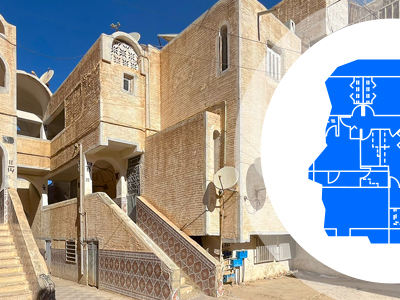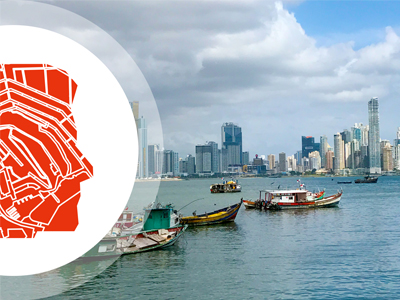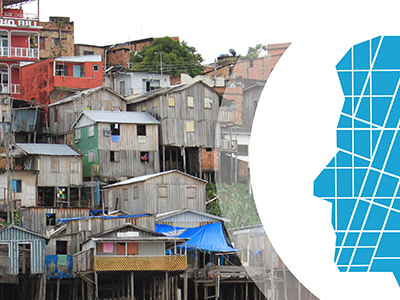Overview
Course video
Learn about the key design strategies required to develop adequate housing and inclusive dwelling environments for sustainable urban development.
Building adequate housing is a pressing issue worldwide. With close to a billion people currently living in slums, accommodating a growing population, and improving dwelling conditions is a critical issue for society.
This challenge cannot be solved with a one-size-fits-all approach. Every city, region and country demand their own housing models and prototypes. That's why housing design needs to negotiate many aspects simultaneously to achieve sustainable urban environments and inclusive dwelling communities.
This course uncovers how social, economic and environmental factors are interrelated in the design of housing settlements. For this, the course dives into three key aspects that anyone involved in housing design should take into consideration: time, environment, and community. Each of these aspects will be examined through a specific design approach, respectively:
- Incrementality: how dwelling environments should be able to accommodate growth and change through time.
- Typology Mix: how design can be responsive to different patterns of inhabitation, aspirations and cultural backgrounds, creating inclusive dwelling environments.
- Clustering: what methods and strategies can shape the association of dwelling units in order to create meaningful communities.
In this course, each of these themes will be discussed in detail and exemplified by a new analytical approach to award-winning housing projects developed in different geopolitical contexts.
While each of these themes will examine aspects related to the design decision-making process, the course aims at addressing concerns that go beyond the design disciplines. Hence, regardless of background or level of expertise, this course will introduce learners to the core issues and challenges of global housing design, using examples from different regions.
This course has been developed by TU Delft's Faculty of Architecture and the Built Environment in collaboration with the Aga Khan Trust for Culture (AKTC). It offers a unique combination of videos, documentation of key case studies, animations, and feedback sessions. We will discuss options for affordable housing design, with a particular focus on low- and middle-income countries. We will take you through the intricacies of designing "housing for the large number", as well as inspire you to understand your own context and the housing challenges you might be facing.
What You'll Learn:
- Identify social practices and spatial configurations that determine the qualities of existing dwelling communities.
- Understand how incrementality, typology mix and clustering can become key design approaches in enhancing the living conditions of urban communities.
- Recognize design approaches that can contribute to the development of adequate housing neighbourhoods.
- Compare the characteristics of housing schemes designed by different architects taking account of different social, political and geographical contexts.
- Evaluate the performance of dwelling communities taking into consideration the relation between social, economic and environmental factors.
- Formulate a design hypothesis and/or a managerial strategy to develop an inclusive dwelling community based on incrementality, typology mix and clustering.
Award:
 Dick van Gameren, Nelson Mota, Frederique van Andel and Rohan Varma (Faculty of Architecture and the Built Environment) are the winners of the 2022 edX Prize for Exceptional Contributions in Online Teaching and Learning, for their exemplary Global Housing Design. The course, which focuses on the design of sustainable and inclusive housing, directly addresses the critical global need for urban development expertise, with close to a billion people worldwide currently living in inadequate housing. Read more...
Dick van Gameren, Nelson Mota, Frederique van Andel and Rohan Varma (Faculty of Architecture and the Built Environment) are the winners of the 2022 edX Prize for Exceptional Contributions in Online Teaching and Learning, for their exemplary Global Housing Design. The course, which focuses on the design of sustainable and inclusive housing, directly addresses the critical global need for urban development expertise, with close to a billion people worldwide currently living in inadequate housing. Read more...
Details
Course Syllabus:
Week 1:
The course begins with an introduction to the main design themes, course structure and some other more practical matters. This week also provides opportunities for you to introduce yourself to all the other participants.
In the following weeks, the themes will be discussed in detail and exemplified by a new analytical approach to housing projects that have won the prestigious Aga Khan Award for Architecture, and that were developed in the 1970s and 1980s, a period of intense advancement in housing design and theory.
Week 2:
This module focuses on incrementality. We will discuss how housing can be designed to accommodate growth and change through time. This approach to housing design has been widely discussed and debated over the last century, and it is usually associated with a period of resource scarcity and economic austerity. The Indian architect, B.V. Doshi's Aranya Low-Cost Housing project in Indore is a very good example of allowing people to build and mould their own houses, and best demonstrates his ideas for low-income housing and incrementality – that architecture must allow for growth and change. Designed for a population of about 60,000 people across some 85 hectares, Aranya, today, has grown to resemble a typical Indian town where narrow streets are shaded by a variety of houses, ranging from ground story dwellings to even three-floor high urban townhouses.
Week 3:
This module will discuss the importance of creating a typology mix in housing settlements. This design approach will be discussed through a close look to Shushtar New Town, a project designed by the Iranian architect, Kamran Diba. Shushtar was designed to house 30,000 industrial workers along the principles of traditional urban patterns typically found in old Iranian towns and cities. In this project, an interwoven urban fabric built in (mud) brick construction houses a diverse set of dwelling types that at the same time are carefully orchestrated in a master plan consisting of gardens, paved squares, covered and shaded resting places, arcades and bazaars.
Week 4:
This module focuses on clustering as a design strategy to create meaningful communities. We will study in-depth the Dar Lamane Housing project in Casablanca, Morocco. We will analyse how a low-income residential community built for 25,000 people, and consisting of over 4,000 units, makes use of an ingenious clustering of four-and five-story apartment blocks, organized around a large central square in which the mosque, markets and festival hall are located.
Week 5:
We will introduce the final assignment in which you will develop a critical stance towards the housing challenges in your own context, using the theories and tools presented during the course.
Week 6:
Review and final feedback.
License
Unless otherwise specified, the Course Materials of this course are Copyright Delft University of Technology and are licensed under a Creative Commons Attribution-NonCommercial-ShareAlike 4.0 International License.
Qualifications
Chartered Engineering Competences
All our online courses and programs have been matched to the competences determined by KIVI’s Competence Structure, a common frame of reference for everyone, across all disciplines, levels and roles.
These competences apply to this course:
- A1: Extend your theoretical knowledge of new and advancing technologies.
- E3: Undertake engineering activities in a way that contributes to sustainable development and a circular economy.
Admission
This is a Massive Open Online Course (MOOC) that runs on edX.
Prerequisites
- Undergraduate-level education in architecture, urban design, or planning;
or - Previous knowledge in disciplines that deal with the built environment in general, and the development of housing in particular in social sciences (e.g. art and architectural history, anthropology, sociology) or applied sciences (e.g. civil engineering).


